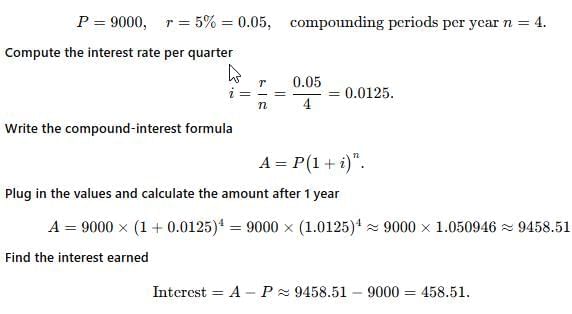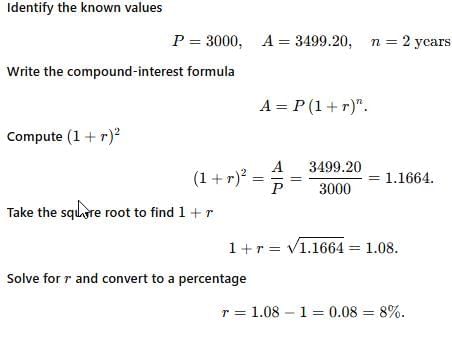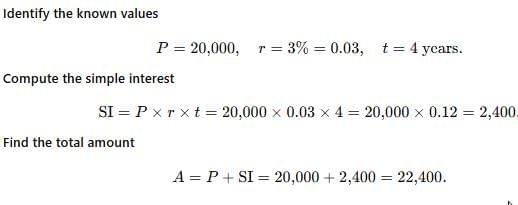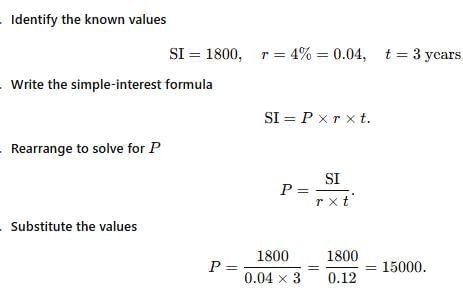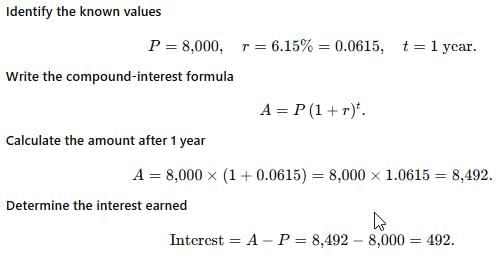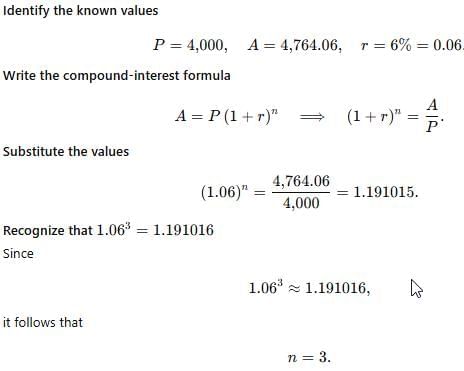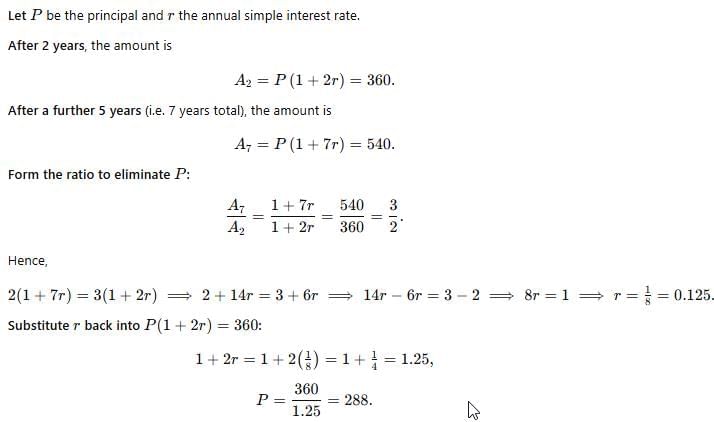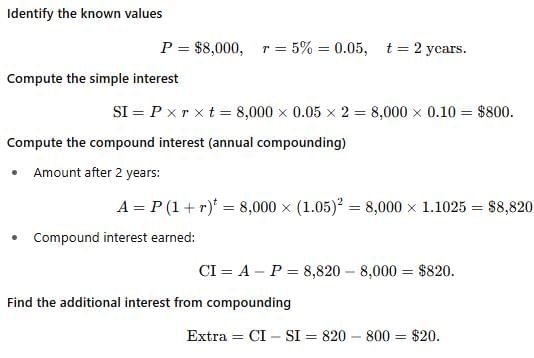Sample Previous Year Questions: Simple Interest and Compound Interest | Quantitative for GMAT PDF Download
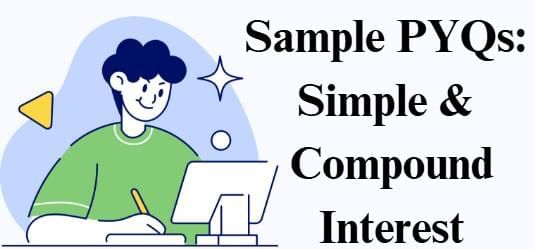 Q1. A principal of $9,000 is invested at an annual interest rate of 5%, compounded quarterly. What is the interest earned after 1 year?
Q1. A principal of $9,000 is invested at an annual interest rate of 5%, compounded quarterly. What is the interest earned after 1 year?
A) $450
B) $456
C) $461
D) $459
E) $471
Ans: D) $459
Explanation:
Q2. A principal of $3,000 grows to $3,499.20 after 2 years at an annual compound interest rate, compounded annually. What is the annual interest rate?
A) 6%
B) 7%
C) 8%
D) 9%
E) 10%
Ans: C) 8%
Explanation:
Q3. A sum of $20,000 is invested at a simple interest rate of 3% per year. What is the total amount (principal + interest) after 4 years?
A) $21,200
B) $22,000
C) $22,400
D) $22,800
E) $23,200
Ans: C) $22,400
Explanation:
Q4. An investment earns $1,800 in simple interest over 3 years at an annual rate of 4%. What was the principal amount?
A) $13,000
B) $14,000
C) $15,000
D) $16,000
E) $17,000
Ans: C) $15,000
Explanation:
Q5. A principal of $8,000 is invested at an annual interest rate of 6.15%, compounded once per year. What is the interest earned after 1 year?
A) $480
B) $486
C) $489
D) $492
E) $495
Ans: D) $492
Explanation:
Q6. A $4,000 principal grows to $4,764.06 at 6% compound interest, compounded annually. How many years did it take?
A) 2
B) 3
C) 4
D) 5
E) 6
Ans: B) 3
Explanation:
Q7. Jane invested a sum in a bank that paid simple interest. The amount grew to $360 after 2 years, and she received $540 after 5 more years. What was the principal amount?
A) $257
B) $246
C) $288
D) $320
E) $472
Ans: C) $288
Explanation:
Q8. Mark invested $8,000 for 2 years at 5% interest. One account used simple interest, the other compound interest annually. How much more interest from the compound?
A) $20
B) $25
C) $30
D) $35
E) $40
Ans: A) $20
Explanation:
|
127 videos|154 docs|111 tests
|
FAQs on Sample Previous Year Questions: Simple Interest and Compound Interest - Quantitative for GMAT
| 1. What is the formula for calculating simple interest? |  |
| 2. How does compound interest differ from simple interest? |  |
| 3. What is the significance of the time period in interest calculations? |  |
| 4. Can you explain how to convert an annual interest rate to a monthly rate for compound interest calculations? |  |
| 5. How do you calculate the total amount accumulated after a certain period with compound interest? |  |

